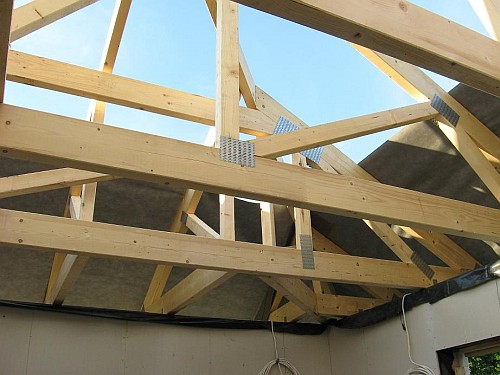 Having a few nails into hard wood, Along one line we can expect the inevitable split of wood along the grain. Against this damage to the wood element can be protected by sticking the nails not in one line but moved to the sides. Moving the nails from the longitudinal axis of the element in succession will be easy for, when its width is greater.
Having a few nails into hard wood, Along one line we can expect the inevitable split of wood along the grain. Against this damage to the wood element can be protected by sticking the nails not in one line but moved to the sides. Moving the nails from the longitudinal axis of the element in succession will be easy for, when its width is greater.
Cutting the jigsaw in the circle
A simple electrical jigsaw can be made of a piece of board or a plate belt. Just attach two strips to it, under which the jigsaw is followed. The leg of such a circus is a nail stuck in the plate and cut material. By changing the nail punching site, we will be able to cut objects with arches of different diameters. Slats to fix the footer should have a cross -section of a wooden angle.
Longitudinal cutting of the roller
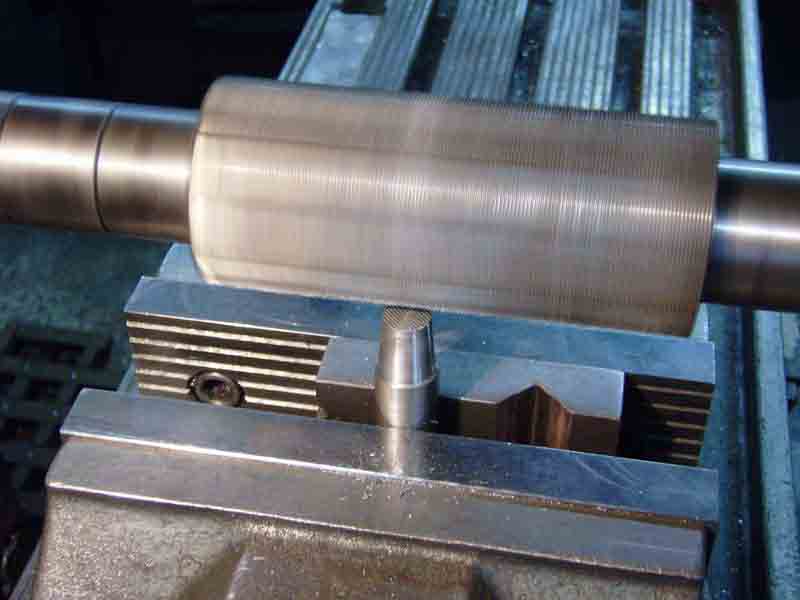 To cut the wooden roller very closely to its axis, You can use a ring from a thin tin sleeve or plastic. The sleeve covered with a roller and the upper edge of the blade will be a very convenient lead for the saw. For cutting, you need to use a small saw with small teeth or blade from the frame saw for cutting metal.
To cut the wooden roller very closely to its axis, You can use a ring from a thin tin sleeve or plastic. The sleeve covered with a roller and the upper edge of the blade will be a very convenient lead for the saw. For cutting, you need to use a small saw with small teeth or blade from the frame saw for cutting metal.
Avlet from the rail
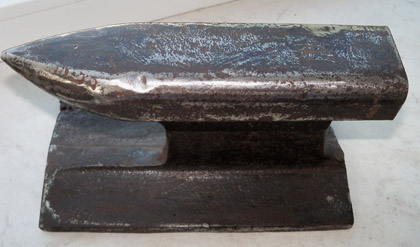 From the old rail rail, properly trimmed and sanded, You can make an anvil useful in the home workshop. It is worth looking for various types of rails and making e.g.. Large anvil with construction cranes and small from the narrow -gauge railway rails. The anvil is easy to shape with an angle grinder. An anvil with larger dimensions should be screwed with four screws to a wooden stump made of hard wood.
From the old rail rail, properly trimmed and sanded, You can make an anvil useful in the home workshop. It is worth looking for various types of rails and making e.g.. Large anvil with construction cranes and small from the narrow -gauge railway rails. The anvil is easy to shape with an angle grinder. An anvil with larger dimensions should be screwed with four screws to a wooden stump made of hard wood.
A block for grinding the corners
The block used to sand with sandpaper should have one beheaded edge oblique. This will make it easier to grind various concave corners. In the home workshop it is worth storing two such blocks of different sizes next to blocks with a concave and convex surface. The blocks should be made of soft wood, preferably linden or poplar. They can be cut from a technical cork.
Removing the nails with a magnet
If small metal parts are stored in a jar, It is worth sticking a tin handle with a piece of magnet to the bottom of the lid with a two -component glue. After removing the lid, we have easy access to small elements attached to the magnet. We attach a short handle to the lid (longer is uncomfortable) with a magnet. Before opening the container, we shake it, that small parts stick to the magnet.
A vice of mandrel
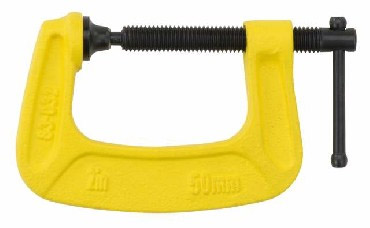 Small wooden blocks can be attached to the table with ordinary carpentry clamps instead of the jaw. Such clamps were used to attach the starters to power tools produced in Poland. Just drill a hole on the bottom of the workshop table top. If we have several such clamps, it will be possible to fix even long boards, np. to plane their side edges.
Small wooden blocks can be attached to the table with ordinary carpentry clamps instead of the jaw. Such clamps were used to attach the starters to power tools produced in Poland. Just drill a hole on the bottom of the workshop table top. If we have several such clamps, it will be possible to fix even long boards, np. to plane their side edges.
Equal pressure on the long section
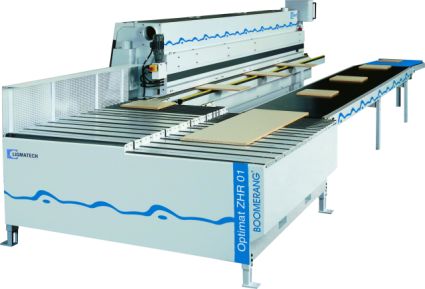 When gluing long parts, A thicker strip is placed under the squeeze, And at its ends – thin pads. In this way, we exert pressure on the entire length of the gluing with one compression. However, such pads should not be thicker than 5-8 mm. The pressing strip must be slightly smaller than the glued parts.
When gluing long parts, A thicker strip is placed under the squeeze, And at its ends – thin pads. In this way, we exert pressure on the entire length of the gluing with one compression. However, such pads should not be thicker than 5-8 mm. The pressing strip must be slightly smaller than the glued parts.